Coleshill FWAD Biomethane Scheme (2019)
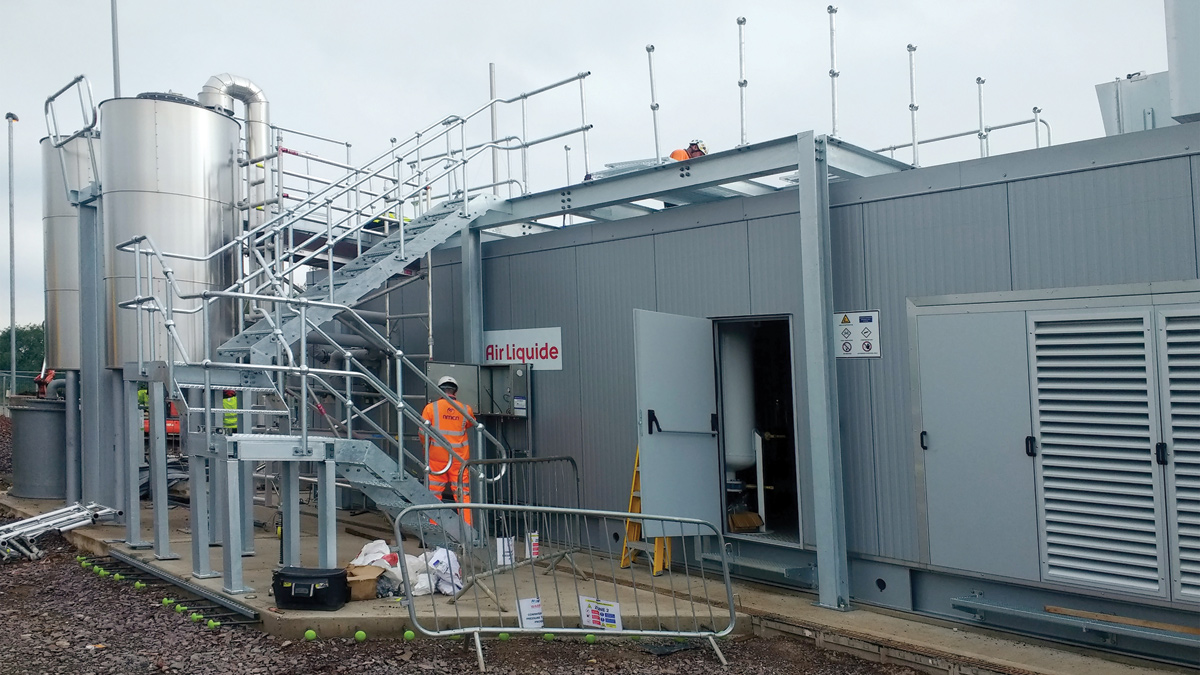
Biogas upgrader platform installation - Courtesy of Galliford Try
The Coleshill Food Waste Anaerobic Digestion Plant processes 48,500 tonnes per annum of food waste collected generally within 30 miles of the site. The site has been in continuous operation since January 2015 when it first received commercial customers. It is currently estimated that this project can deliver 5.5GWh per annum (electrical equivalence) of new renewable generation through making best use of the biogas on site and providing additional capacity to allow the site to make full use of its waste licenses. This would contribute 0.6% towards the company generation target.
Existing site
The site currently converts 100% of the waste it receives into biogas for electrical production. In 2016/17 the site produced 17.5GWh of renewable electricity, which it supplies to both itself and the adjacent sewage treatment works. Coleshill STW consumes approximately 6.5GWh of electricity each year and receives it under a PPA from Severn Trent Green Power (STGP). The existing food waste site comprises of:
- 2 (No.) primary digestion tanks.
- 2 (No.) secondary digestion tanks.
- 1 (No.) digestate storage tank.
- Reception hall containing pasteurisation tanks, 2 (No.) reception bays, liquid reception point and 2 (No.) de-packaging lines.
- 2 (No.) 4 series Jenbacher 1.05MWe CHP engines.1 (No.) crop storage silo.
- Digestate screening and tanker filling point.
Project requirements
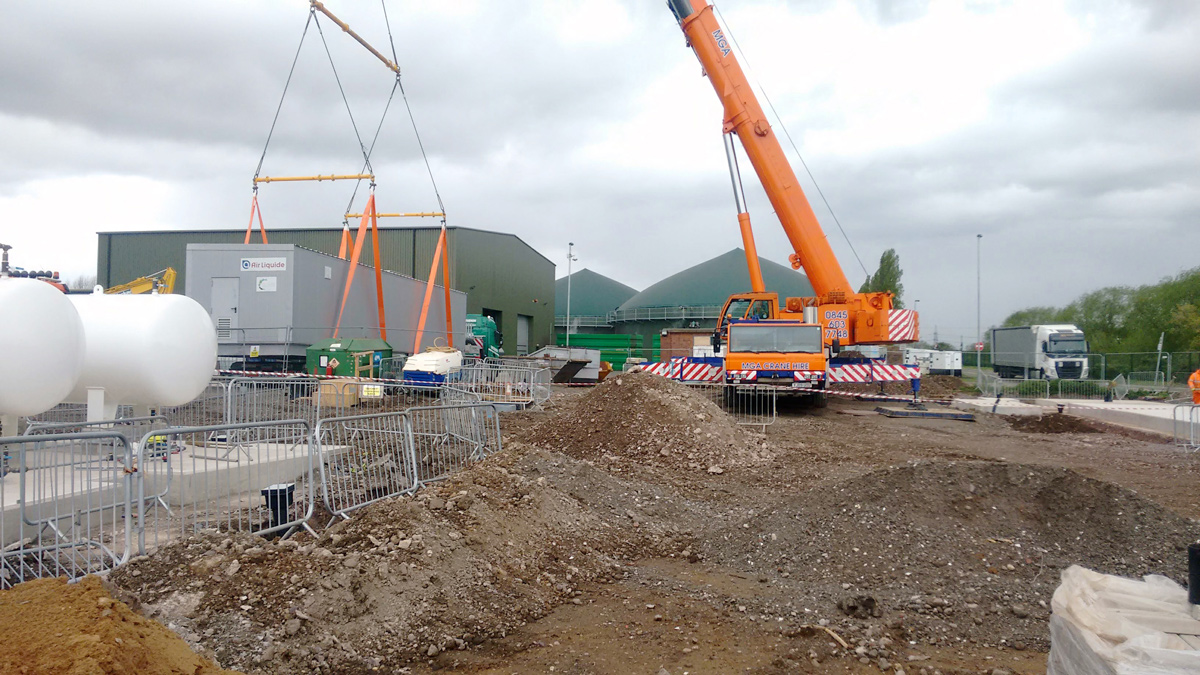
Biogas ugrader delivery – Courtesy of Galliford Try
The gas-to-grid plant will enable the export of biomethane into the local Cadent IP distribution system and is suitable for registration under the RHI scheme. Galliford Try are responsible for liaison with National Grid and preparation of all commercial arrangement documentation to enable the export of biomethane into the local Cadent IP distribution system.
The project scope includes:
- Biogas upgrader with VOC PSA filtration: The biogas upgrader comprises an ALaT Membrane plant with H2S and VOC filtration. Access steelwork to the filters and refill points for the granular activated carbon has been designed, manufactured and installed by Galliford Try’s fabrication company.
- Grid entry unit (GEU) and remote operated valve (ROV): The GEU supplied by Elster has been proven in operation on National Grid area sites. The GEU will be independently reviewed under the IGEM GL/5 procedure for mechanical, electrical, instrumentation and software. Additionally there will be a G17 review for the parts of the GEU that are adopted by National Grid (ROV and telemetry).
- Propane system: The propane storage tank, pumps and pipework comply with UK LPGA standards and a minimum of 10 days propane storage will be provided.
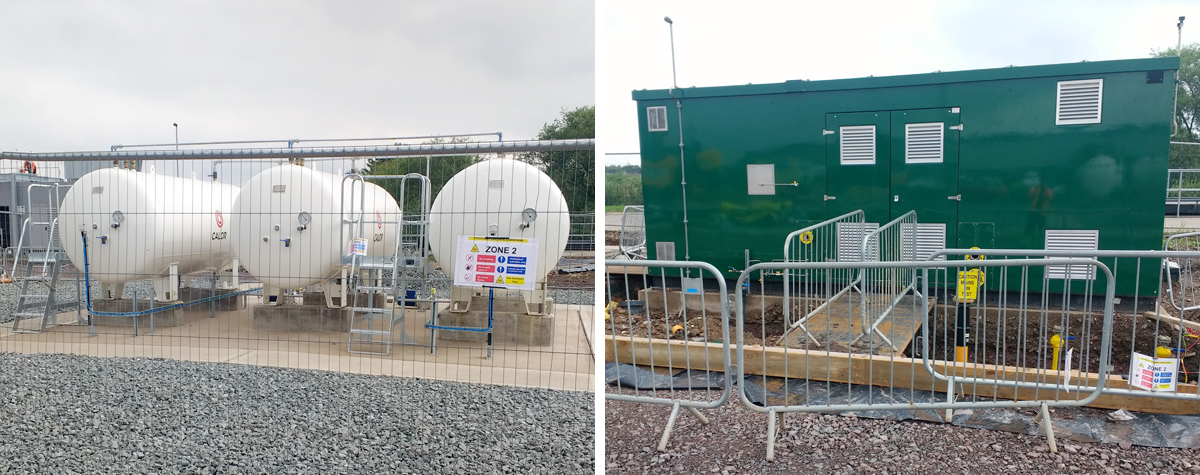
(left) Calor propanation system and (right) grid entry unit – Courtesy of Galliford Try
- Connection and pipeline from existing biogas system: The feed to the biogas upgrader is from the FWAD plant specifically from the gas outlet pipework from primary digester 1 and secondary digester 4. This was done as hot-taps onto the below-ground pipes removing the need for costly interruptions to the process. The below-ground pipework removes the risk of vehicle/machinery interaction in a potentially hazardous area.
- Reject buried biogas pipeline to the FWAD biogas storage system: Non-compliant gas from the BUU is rejected back to the FWAD biogas storage system. Below-ground pipework is utilised to the base of the digester, and then rises to the high level connection in between primary digester 1 and secondary digester 4.
- Export main pipeline and connection to the Cadent infrastructure: The export main is the connection from the remote operated valve to the gas main in the highway.Energy Assets Utilities, Galliford Try’s chosen UIP installer, dealt with all TMA notices, assist with tripartite agreements, easements for the pipeline and completed all the necessary GL5 & G17 designs to Cadent’s standards.
- Control systems and interfaces: The STGP plant has a central interface controller, adapted to accommodate the gas-to-grid plant. This is done over the plant’s SCADA system and will control and monitor the BUU, GEU & ROV, each having their own local control panels.
- Interconnecting pipework and cables: Galliford Try, with the help of various specialist subcontractors, have installed all on site pipework and cabling required to connect the plant.
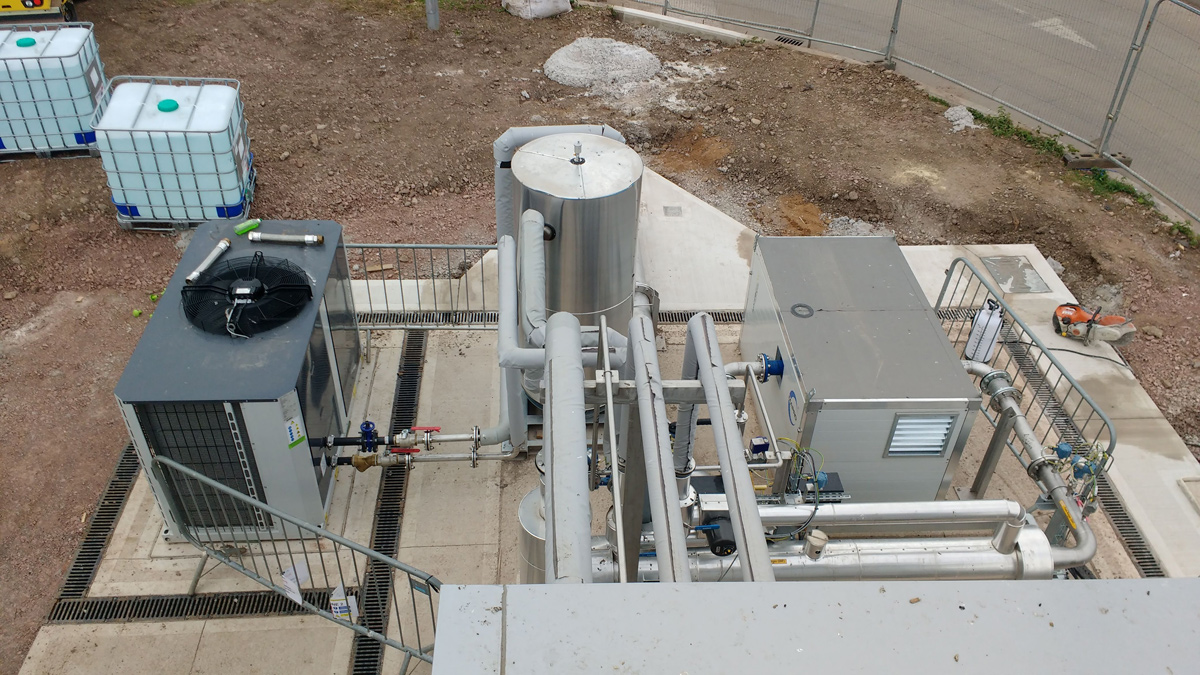
Chiller and gas booster – Courtesy of Galliford Try
Cadent 12-stage process
- (1) Project kick off
- Discuss contract obligations agree roles and responsibilities.
- Run through project deliverable plan.
- Discuss legal requirements (easement and lease).
- (2) Initial design meeting
- Receive robust customer project delivery plan.Discuss initial designs with Cadent for early comments and discussion.
- Databook requirements overview.
- Discuss queries regarding project deliverable plan.
- Evidence that agreement in principle has been reached with landowners for easement and/or lease.
- (3) Pre-GQ8 info pack
- Pre information pack must be submitted before Cadent will agree date for GQ8 meeting.
- Draft operating philosophy required.
- (4) GQ8 + HAZOP meetings
- Gas quality risk assessment that informs the sampling protocol – (must be closed out before instrumentation & software part C can be signed).
- Actions should be completed before Part B design submission.
- Undertake operational hazard study. All actions must be closed out before Part B design packs submitted.
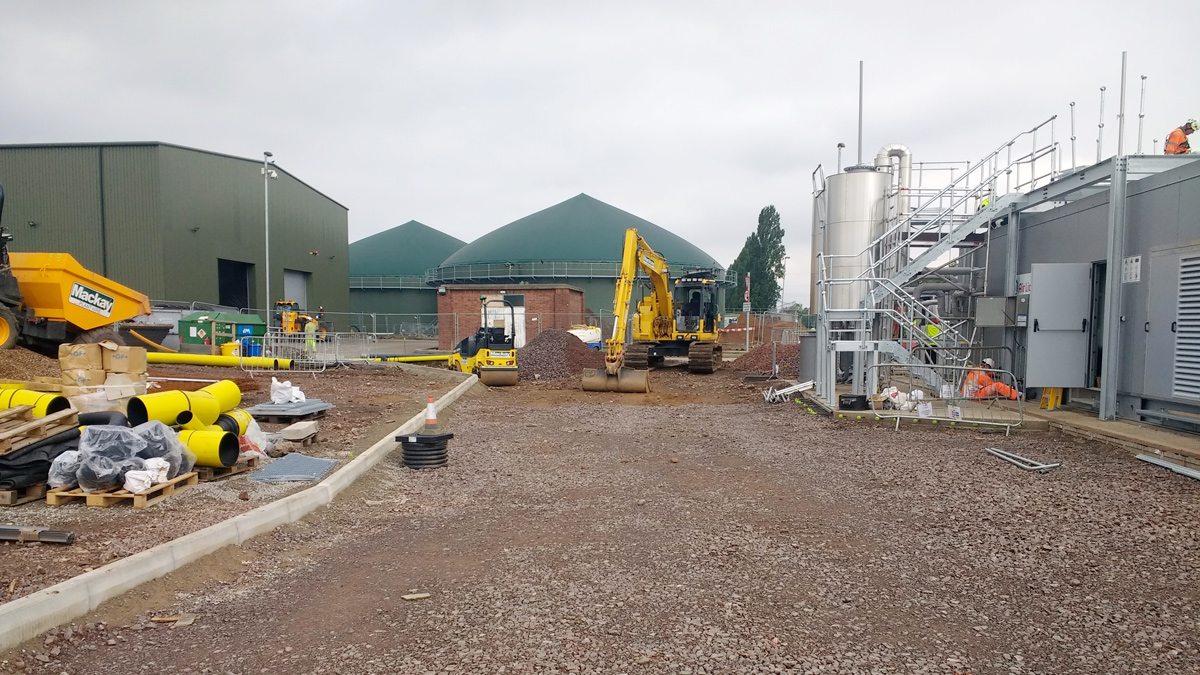
Biogas upgrader and H2S filters – Courtesy of Galliford Try
- (5) D-16 weeks
- All G17, GL5 documents where applicable submitted to Cadent i.e. inclusive of accepted I/O schedule.
- Appraised Hazardous area report submitted to Cadent.
- Weld procedures & NDT techniques submitted.
- (6) D-12 weeks
- G17 and GL5 documents accepted (part C) by Cadent.
- Hazard Area report accepted by Cadent.
- Acceptance of procedural documents (including operating philosophies) completed.
- MARQUIS template accepted by Cadent.
- (7) D-8 weeks
- Submit gas bottle certs, electrical install certs, data sheets, G17 part D, and Chromat letter of approval.
- Cadent to receive FAT results.
- Submit QA packs.
- (8) D-4 weeks
- Cadent complete site readiness visit to confirm site is safe to undertake gas to grid.
- Cadent to receive ISO10723 and 17025 (analyser evaluations, ME2 (meter validation) and SAT (site acceptance test)) reports.
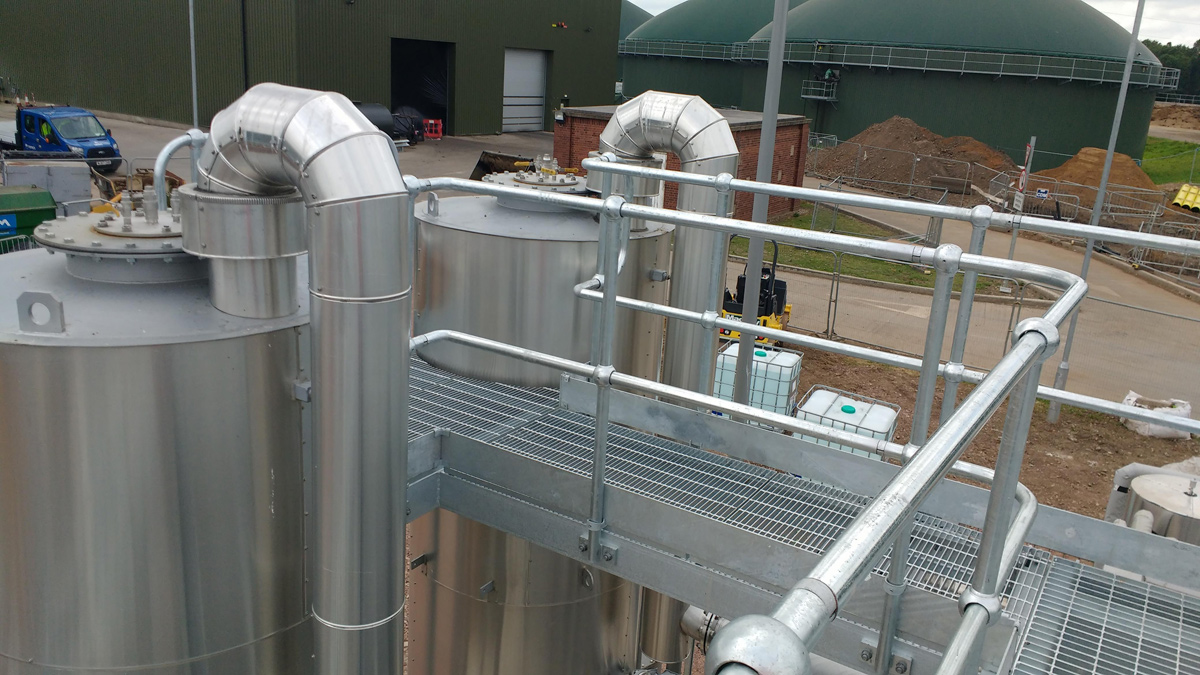
Top of H2S filters – Courtesy of Galliford Try
- (9) D-3 weeks
- Cadent personnel on site.
- Complete ROV functional checks.
- Undertaken end to end testing.
- (10) D-2 weeks
- All deliverables must be submitted, reviewed and closed by Cadent.
- Letter of direction confirmed.
- Red line drawings for all Cadent assets submitted.
- All gas samples to be taken in line with sampling protocol.
- (11) Gas to Grid
- Complete 35 day test.
- Complete daily calibration file.
- Undertake the NRO for commissioning.
- Site demonstrate sufficient flow to complete NRO including rhinology.
- Cadent complete G/17 Part E.
- (12) Part F closure
- Data books (including as built drawings) to be delivered and reviewed.
- Operational drawings (Cadent borders) required.
- Completion file to be received and pipeline digitised on ESRI.
Construction programme
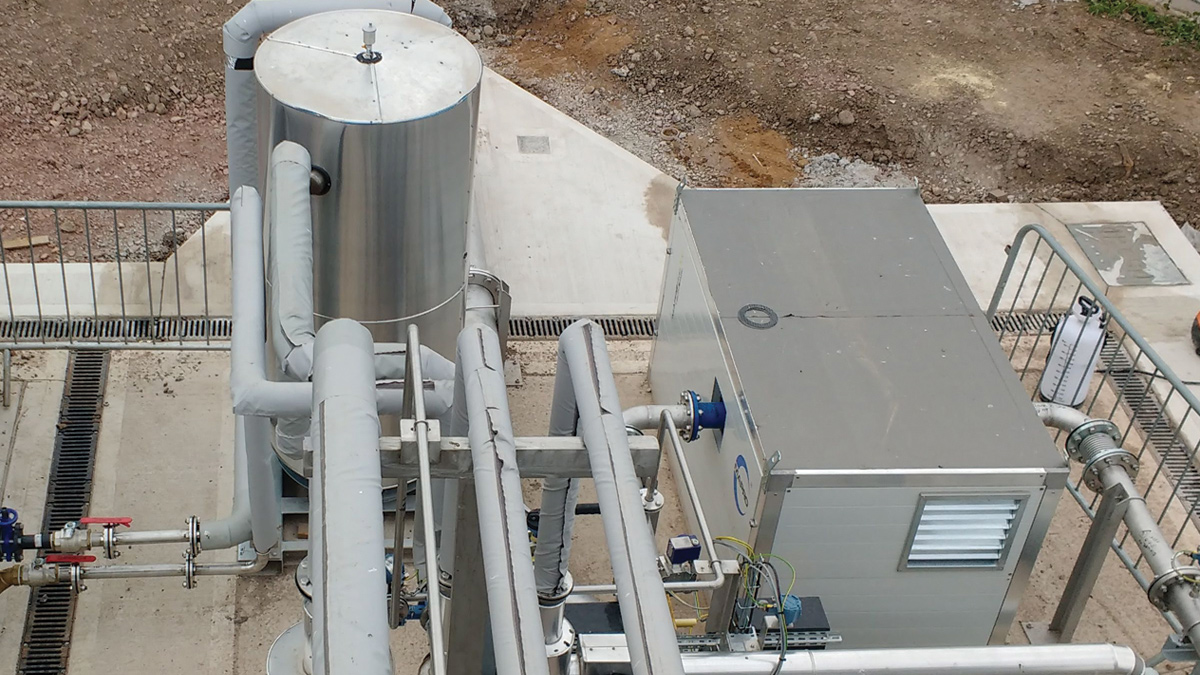
Chiller and gas booster – Courtesy of Galliford Try
Construction started on site in January 2019 and gas to grid is programmed to complete in August 2019. At the time of writing, all civils bases are complete and the booster, chiller, AC filters, up-grader, grid entry unit, propane storage system and remote operated valve are installed.
Pipeline installation on site for the interconnecting pipework is substantially complete and the export main to connect to the Cadent IP distribution system has begun and will be completed in 3 weeks. All electrical ducting is installed with the electrical installation 90% complete and dry commissioning has begun with gas to grid scheduled for August 2019.
Supply chain
- Main contractor: Galliford Try.
- Biogas upgrader plant: Air Liquide.
- 2-part system grid entry unit & remote operated valve: Elster.
- Export pipeline to CADENT connection point: Energy Assets Utilities.
- Propanation system: Calor Gas.
- VOC filter: OSIL Ltd.
- Electrical installation: Main Electrical.
- Above ground stainless steel pipework: De Havilland Engineering.





